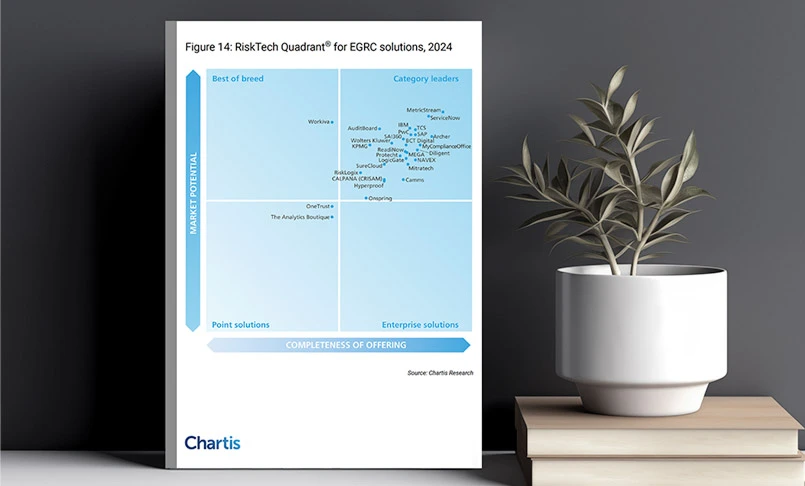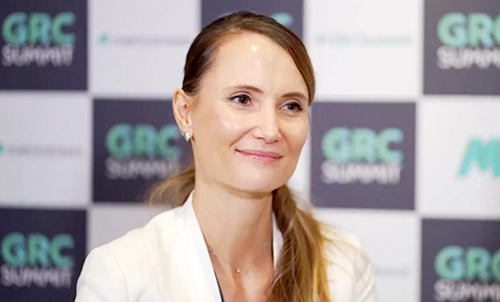Introduction
In today’s hyperconnected world, the financial sector increasingly relies on digital systems and services. While this digital transformation has brought significant efficiencies, it has also exposed institutions to heightened cybersecurity threats and operational risks. Recognizing the need for robust safeguards, the EU introduced the Digital Operational Resilience Act (DORA) as a cornerstone regulation to strengthen the digital resilience of financial entities and third-party providers.
DORA underscores the importance of harmonized rules across the EU, enabling businesses to navigate digital risks more effectively while fostering trust among stakeholders. This regulation, which took effect in January 2025, aligns with the broader objectives of the EU’s Digital Finance Strategy.
Key Takeaways
- The purpose of DORA is to establish a uniform regulatory framework for digital operational resilience in the financial sector.
- It applies to a wide range of financial entities and third-party Information and Communication Technology (ICT) service providers operating in the EU.
- DORA covers risk management, incident reporting, digital resilience testing, ICT third-party risk management, and information-sharing frameworks.
- Financial entities must achieve compliance by January 2025.
- Institutions should assess their existing resilience measures, enhance monitoring systems, and establish robust risk management frameworks.
What is the Digital Operational Resilience Act (DORA)?
DORA is a regulatory framework adopted by the European Union to ensure the financial sector can prevent, mitigate, and recover from operational disruptions. It specifically addresses risks posed by digital dependencies, including cybersecurity threats and ICT (Information and Communication Technology) outages.
The regulation aims to establish consistent standards across member states, thus reducing fragmentation in risk management practices. It applies to financial entities such as banks and insurance companies and critical third-party service providers such as cloud service providers.
Key Objectives of DORA
DORA (Digital Operational Resilience Act) aims to strengthen financial institutions' digital resilience by improving ICT risk management, standardizing incident reporting, enforcing regular resilience testing, managing third-party risks, and fostering information sharing to counter cyber threats effectively.
Their objectives include:
- Strengthening Risk Management: Ensuring institutions have robust mechanisms to identify, assess, and mitigate ICT risks.
- Enhancing Incident Reporting: Standardizing how entities report cyber incidents to facilitate coordinated responses.
- Improving Testing Standards: Mandating regular digital operational resilience testing to identify vulnerabilities.
- Managing Third-Party Risks: Regulating ICT service providers to mitigate risks stemming from outsourcing.
- Encouraging Information Sharing: Promoting collaboration among entities to improve collective resilience against cyber threats.
Core Components of DORA’s Framework
DORA’s comprehensive framework revolves around five key pillars:
- ICT Risk Management Entities are required to establish robust risk management frameworks that encompass preventive, detective, and corrective controls. This includes detailed policies and procedures for ICT governance and risk assessment.
- Incident Reporting A unified approach to incident reporting ensures timely communication of cyber incidents. Entities must notify regulators of significant incidents within a defined timeframe and provide periodic updates.
- Digital Resilience Testing Financial entities must conduct regular testing of their ICT systems, including advanced penetration testing for critical functions. These tests aim to identify and address vulnerabilities before they can be exploited.
- ICT Third-Party Risk Management DORA introduces stringent requirements for managing risks associated with third-party service providers. This includes mandatory contractual provisions and regular performance assessments.
- Information Sharing The regulation promotes the voluntary sharing of threat intelligence among financial entities, fostering a collaborative approach to cybersecurity.
Why Digital Operational Resilience Matters
Digital operational resilience is crucial for maintaining trust, ensuring regulatory compliance, and safeguarding financial stability. Key reasons why it matters include:
- Rising Cyber Threats: The financial sector remains a prime target for cyberattacks, with ransomware and phishing being the most common. The ENISA Threat Landscape 2022 Report highlighted a 150% increase in ransomware attacks over the past year
- Operational Continuity: Disruptions to ICT systems can have far-reaching consequences, from financial losses to reputational damage.
- Regulatory Alignment: DORA harmonizes resilience standards across the EU, ensuring a consistent approach to managing digital risks.
- Market Confidence: Robust resilience measures foster stakeholder trust and enhance the sector’s overall stability.
Who Does DORA Impact?
DORA regulations apply to a broad range of financial entities and ICT third-party providers operating within the EU. This includes:
- Financial Institutions: Banks, insurance companies, investment firms, payment institutions, and credit institutions.
- ICT Service Providers: Providers of cloud computing, data analytics, and other critical services.
- Critical Infrastructure Operators: Entities providing essential services linked to the financial sector.
Notably, non-EU-based providers serving EU entities are also subject to compliance if their services are deemed critical.
Gearing Up For DORA: 5 Steps to Compliance
Rather than scrambling at the last minute to meet the DORA requirements, entities falling under the regulations could benefit from a head-start on the compliance journey. It is important to remember that DORA is only one of many operational resilience regulations around the world. The UK is already hinting at a DORA-equivalent rule to improve the resilience of outsourcing to technology providers in the financial sector. The faster organizations get started on a digital resilience framework, the better prepared they will be to manage the myriad of risks and regulations ahead.
Here are five key steps for financial firms to improve digital resilience and DORA compliance:
- Map out the current state of compliance
- Take stock of your current risk management and compliance measures. Benchmark them against DORA requirements to identify compliance gaps
- Document all critical or important functions (CIFs). Map their assets and dependencies
- Mobilize the investment, resources, and executive buy-in needed for compliance
- Be proactive about risk management
- Identify your cyber risks, operational risks, and digital risks – including risk drivers
- Assess risk probability and impact to determine which risks need to be addressed on priority
- Design and conduct top-down and bottom-up risk assessments at regular intervals with clear lines of risk responsibility and accountability
- Implement controls based on industry-standard frameworks with well-defined test plans and assessments
- Periodically test the security and resilience of critical IT applications. Proactively address any vulnerabilities that are identified
- Clearly articulate risk thresholds for ICT disruptions supported by key risk and performance indicators with automated alerts and continuous monitoring of risk metrics
- Identify and document issues from IT risk assessments to easily initiate an investigation which if required can easily uncover root cause analysis and support speedy remediation
- Set up and maintain consistent procedures for ICT incident identification, triaging, investigation, tracking, reporting, and closure
- Build a unified view of risk
- Establish a consistent taxonomy across the enterprise for digital risks, incidents, and threats
- Map your digital and ICT risks to the corresponding assets, threats, vulnerabilities, business objectives, controls, processes, third parties, and compliance requirements. A clear understanding of these relationships across these data elements will make compliance easier
- Consolidate all risk and control data in a single source of truth for easy monitoring
- Monitor the threat landscape, zero-day advisories, and threat bulletins from industry sources
- Import data from vulnerability scanners and generate a combined risk rating for each asset
- Keep ICT vendor risks in check
- Identify critical third-party ICT service providers. Centrally document all vendor-related information such as services provided, associated business units, certifications, and risk ratings
- Streamline vendor information gathering, due diligence, onboarding, monitoring, and risk assessments. Trigger periodic vendor risk assessments
- Deepen visibility into vendor cyber risks with authoritative intelligence from trusted sources (e.g., Dow Jones, D&B, BitSight, Security Scorecard)
- Capture and track vendor business continuity plans
- Develop an effective business continuity program
- Trigger business impact analysis (BIA) surveys of ICT. Prioritize key assets and processes for recovery
- Perform qualitative and quantitative assessments of business continuity risks
- Create incident response and business continuity plans with clear recovery and response tasks, including crisis communication plans, and timelines. Regularly test these plans to check their effectiveness
Why MetricStream
The Digital Operational Resilience Act is a game-changer for the financial sector, setting new benchmarks for managing digital risks. By establishing harmonized standards across the EU, DORA not only enhances individual organizational resilience but also contributes to the broader stability of the financial ecosystem.
Organizations must act now to ensure they are fully compliant by January 2025. By prioritizing governance, risk management, and testing, financial entities can navigate the complexities of DORA while safeguarding their operations against future threats.
With MetricStream's CyberGRC solutions, including IT and Cyber Compliance and IT and Cyber Policy, you are empowered to prepare for DORA along with an opportunity to build stronger, more resilient systems that can adapt to an ever-evolving digital landscape. To know more, request a personalized demo.
Frequently Asked Questions (FAQ)
What is the Digital Operational Resilience Act?
The Digital Operational Resilience Act (DORA) is an EU regulation aimed at ensuring the operational resilience of financial entities and their third-party ICT providers against digital disruptions and cyber threats.
What is the DORA Regulation Act?
DORA is a regulatory framework designed to harmonize digital resilience standards across the EU financial sector to prevent, manage, and recover from ICT-related risks.
What is the purpose of DORA?
The purpose of DORA is to strengthen the ability of financial institutions to withstand, respond to, and recover from operational disruptions, particularly those caused by cyber incidents.
In today’s hyperconnected world, the financial sector increasingly relies on digital systems and services. While this digital transformation has brought significant efficiencies, it has also exposed institutions to heightened cybersecurity threats and operational risks. Recognizing the need for robust safeguards, the EU introduced the Digital Operational Resilience Act (DORA) as a cornerstone regulation to strengthen the digital resilience of financial entities and third-party providers.
DORA underscores the importance of harmonized rules across the EU, enabling businesses to navigate digital risks more effectively while fostering trust among stakeholders. This regulation, which took effect in January 2025, aligns with the broader objectives of the EU’s Digital Finance Strategy.
- The purpose of DORA is to establish a uniform regulatory framework for digital operational resilience in the financial sector.
- It applies to a wide range of financial entities and third-party Information and Communication Technology (ICT) service providers operating in the EU.
- DORA covers risk management, incident reporting, digital resilience testing, ICT third-party risk management, and information-sharing frameworks.
- Financial entities must achieve compliance by January 2025.
- Institutions should assess their existing resilience measures, enhance monitoring systems, and establish robust risk management frameworks.
DORA is a regulatory framework adopted by the European Union to ensure the financial sector can prevent, mitigate, and recover from operational disruptions. It specifically addresses risks posed by digital dependencies, including cybersecurity threats and ICT (Information and Communication Technology) outages.
The regulation aims to establish consistent standards across member states, thus reducing fragmentation in risk management practices. It applies to financial entities such as banks and insurance companies and critical third-party service providers such as cloud service providers.
DORA (Digital Operational Resilience Act) aims to strengthen financial institutions' digital resilience by improving ICT risk management, standardizing incident reporting, enforcing regular resilience testing, managing third-party risks, and fostering information sharing to counter cyber threats effectively.
Their objectives include:
- Strengthening Risk Management: Ensuring institutions have robust mechanisms to identify, assess, and mitigate ICT risks.
- Enhancing Incident Reporting: Standardizing how entities report cyber incidents to facilitate coordinated responses.
- Improving Testing Standards: Mandating regular digital operational resilience testing to identify vulnerabilities.
- Managing Third-Party Risks: Regulating ICT service providers to mitigate risks stemming from outsourcing.
- Encouraging Information Sharing: Promoting collaboration among entities to improve collective resilience against cyber threats.
DORA’s comprehensive framework revolves around five key pillars:
- ICT Risk Management Entities are required to establish robust risk management frameworks that encompass preventive, detective, and corrective controls. This includes detailed policies and procedures for ICT governance and risk assessment.
- Incident Reporting A unified approach to incident reporting ensures timely communication of cyber incidents. Entities must notify regulators of significant incidents within a defined timeframe and provide periodic updates.
- Digital Resilience Testing Financial entities must conduct regular testing of their ICT systems, including advanced penetration testing for critical functions. These tests aim to identify and address vulnerabilities before they can be exploited.
- ICT Third-Party Risk Management DORA introduces stringent requirements for managing risks associated with third-party service providers. This includes mandatory contractual provisions and regular performance assessments.
- Information Sharing The regulation promotes the voluntary sharing of threat intelligence among financial entities, fostering a collaborative approach to cybersecurity.
Digital operational resilience is crucial for maintaining trust, ensuring regulatory compliance, and safeguarding financial stability. Key reasons why it matters include:
- Rising Cyber Threats: The financial sector remains a prime target for cyberattacks, with ransomware and phishing being the most common. The ENISA Threat Landscape 2022 Report highlighted a 150% increase in ransomware attacks over the past year
- Operational Continuity: Disruptions to ICT systems can have far-reaching consequences, from financial losses to reputational damage.
- Regulatory Alignment: DORA harmonizes resilience standards across the EU, ensuring a consistent approach to managing digital risks.
- Market Confidence: Robust resilience measures foster stakeholder trust and enhance the sector’s overall stability.
DORA regulations apply to a broad range of financial entities and ICT third-party providers operating within the EU. This includes:
- Financial Institutions: Banks, insurance companies, investment firms, payment institutions, and credit institutions.
- ICT Service Providers: Providers of cloud computing, data analytics, and other critical services.
- Critical Infrastructure Operators: Entities providing essential services linked to the financial sector.
Notably, non-EU-based providers serving EU entities are also subject to compliance if their services are deemed critical.
Rather than scrambling at the last minute to meet the DORA requirements, entities falling under the regulations could benefit from a head-start on the compliance journey. It is important to remember that DORA is only one of many operational resilience regulations around the world. The UK is already hinting at a DORA-equivalent rule to improve the resilience of outsourcing to technology providers in the financial sector. The faster organizations get started on a digital resilience framework, the better prepared they will be to manage the myriad of risks and regulations ahead.
Here are five key steps for financial firms to improve digital resilience and DORA compliance:
- Map out the current state of compliance
- Take stock of your current risk management and compliance measures. Benchmark them against DORA requirements to identify compliance gaps
- Document all critical or important functions (CIFs). Map their assets and dependencies
- Mobilize the investment, resources, and executive buy-in needed for compliance
- Be proactive about risk management
- Identify your cyber risks, operational risks, and digital risks – including risk drivers
- Assess risk probability and impact to determine which risks need to be addressed on priority
- Design and conduct top-down and bottom-up risk assessments at regular intervals with clear lines of risk responsibility and accountability
- Implement controls based on industry-standard frameworks with well-defined test plans and assessments
- Periodically test the security and resilience of critical IT applications. Proactively address any vulnerabilities that are identified
- Clearly articulate risk thresholds for ICT disruptions supported by key risk and performance indicators with automated alerts and continuous monitoring of risk metrics
- Identify and document issues from IT risk assessments to easily initiate an investigation which if required can easily uncover root cause analysis and support speedy remediation
- Set up and maintain consistent procedures for ICT incident identification, triaging, investigation, tracking, reporting, and closure
- Build a unified view of risk
- Establish a consistent taxonomy across the enterprise for digital risks, incidents, and threats
- Map your digital and ICT risks to the corresponding assets, threats, vulnerabilities, business objectives, controls, processes, third parties, and compliance requirements. A clear understanding of these relationships across these data elements will make compliance easier
- Consolidate all risk and control data in a single source of truth for easy monitoring
- Monitor the threat landscape, zero-day advisories, and threat bulletins from industry sources
- Import data from vulnerability scanners and generate a combined risk rating for each asset
- Keep ICT vendor risks in check
- Identify critical third-party ICT service providers. Centrally document all vendor-related information such as services provided, associated business units, certifications, and risk ratings
- Streamline vendor information gathering, due diligence, onboarding, monitoring, and risk assessments. Trigger periodic vendor risk assessments
- Deepen visibility into vendor cyber risks with authoritative intelligence from trusted sources (e.g., Dow Jones, D&B, BitSight, Security Scorecard)
- Capture and track vendor business continuity plans
- Develop an effective business continuity program
- Trigger business impact analysis (BIA) surveys of ICT. Prioritize key assets and processes for recovery
- Perform qualitative and quantitative assessments of business continuity risks
- Create incident response and business continuity plans with clear recovery and response tasks, including crisis communication plans, and timelines. Regularly test these plans to check their effectiveness
The Digital Operational Resilience Act is a game-changer for the financial sector, setting new benchmarks for managing digital risks. By establishing harmonized standards across the EU, DORA not only enhances individual organizational resilience but also contributes to the broader stability of the financial ecosystem.
Organizations must act now to ensure they are fully compliant by January 2025. By prioritizing governance, risk management, and testing, financial entities can navigate the complexities of DORA while safeguarding their operations against future threats.
With MetricStream's CyberGRC solutions, including IT and Cyber Compliance and IT and Cyber Policy, you are empowered to prepare for DORA along with an opportunity to build stronger, more resilient systems that can adapt to an ever-evolving digital landscape. To know more, request a personalized demo.
What is the Digital Operational Resilience Act?
The Digital Operational Resilience Act (DORA) is an EU regulation aimed at ensuring the operational resilience of financial entities and their third-party ICT providers against digital disruptions and cyber threats.
What is the DORA Regulation Act?
DORA is a regulatory framework designed to harmonize digital resilience standards across the EU financial sector to prevent, manage, and recover from ICT-related risks.
What is the purpose of DORA?
The purpose of DORA is to strengthen the ability of financial institutions to withstand, respond to, and recover from operational disruptions, particularly those caused by cyber incidents.








